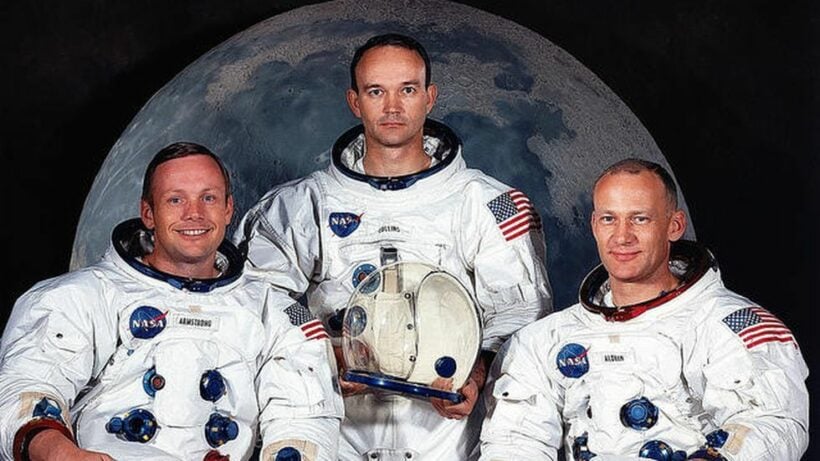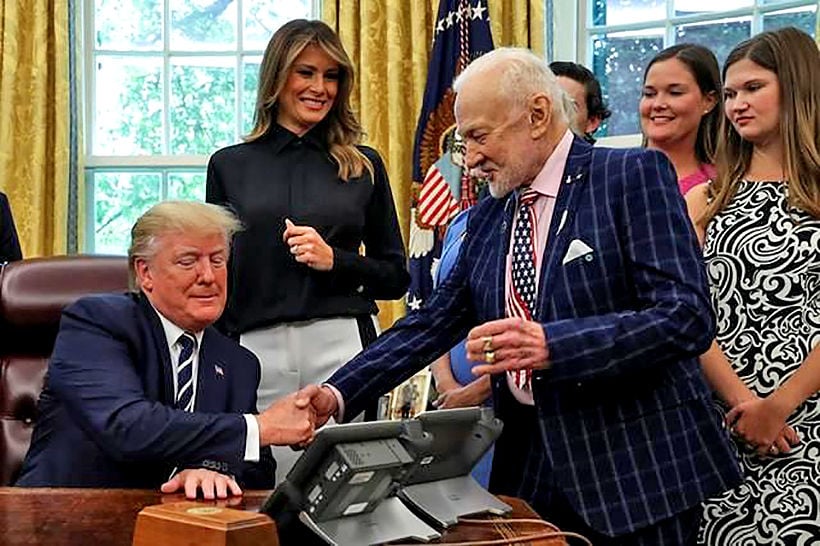One small step for man – 50 years ago today

On this day, a mere 50 years ago, Neil Armstrong stepped onto the powdery surface of the moon. It was the first time humans had stepped anywhere other than the ‘pale blue dot’ of Earth.
Everyone alive at the time can recall ‘where they were’ at this historic moment. It was a triumph of American ambition and engineering. Some 300,000 people were involved with the mission that was promised to the world by then-President John F. Kennedy eight years earlier in 1961.
“We choose to go to the Moon in this decade and do the other things, not because they are easy, but because they are hard; because that goal will serve to organise and measure the best of our energies and skills, because that challenge is one that we are willing to accept, one we are unwilling to postpone, and one we intend to win, and the others, too.”
NASA delivered on the promise, 6 months before deadline, in a decade where America was also grappling with the Vietnam War (Indochina War), social upheaval, civil rights and a youth demanding to be heard, sometimes violently.
Half a century later and there are still a few who, despite the advances in science, knowledge and education accumulated in those 50 years, still believe the moon landing was a ‘hoax’ and that the earth is flat.
I was a 10 year old sitting in my school library watching a 25″ black and white TV along with 200 other students. Honestly, we couldn’t see a lot as the fuzzy pictures were transmitted back from the moon (via Honeysuckle Creek tracking station in Australia), but we knew the moment was historic and we’d been well primed for months by teachers telling us “you’ll be telling your grand children about this mission”. Luckily it was around lunchtime for us in eastern Australia – well timed by NASA, thanks.
The mission to send men to the moon was less a human adventure and more about a nation’s paranoia and fear in the Cold War era. The Russians had a jump on the Americans with the first satellite in space and then the first man in space. America needed to get ‘ahead’ and Congress was willing to spend big to save face and regain the lead in the space race.
But like anything, keeping the PR momentum following the Apollo 11 mission, was difficult and the other moon landing missions attracted fewer viewers and front page headlines. Apollo missions 18-20 were even cancelled. NASA then focussed on the ‘space’ a lot closer to earth with a space station and the Shuttle program.
We all know the names of the Apollo 11 crew. But name the crew of Apollo 12. No? Either can I.
This week President Donald Trump greeted the surviving two astronauts from the Apollo 11 mission – Buzz Aldrin and Michael Collins – to the White House. Neil Armstrong died following heart surgery in 2012 but his relatives were invited.
The President asked Buzz Aldrin, the second human ever to walk on the moon, what he thought about the US’ current ability to operate in space 50 years after the Apollo 11 mission, the ex-astronaut had a ready response.
“Actually, I’ve been a little disappointed over the last 10 or 15 years,” Aldrin told Trump.

PHOTO: President Tump and 88 year old Apollo 11 astronaut Buzz Aldrin,the second man to walk on the moon – Reuters
NASA, more through budget cuts that intention, has been restricted in its ambitions since the Apollo missions. The American tax-payers have cut the paltry space-spend and inter-planetary missions have been by robot and unmanned space craft instead. We’ve actually reached out beyond our own solar system, had 900 kilogram ‘rovers’ traversing large areas of Mars, built an international space-station and built orbiting telescopes that have probed our known universe almost back to the Big Bang. So NASA’s post-Apollo expertise certainly hasn’t been wasted.
Now private funding is heralding a new era of commercial space flight with the promise of passenger flights and re-useable rockets. But the reality is that the enormous amounts of money needed to fund the ‘big’ projects, just like the moon landing 50 years ago, will still take chunks of national budgets, not private funds. Privateers would always need to prove a return-on-spend to their shareholders with low-risk, high yield projects. Manned spaceflight is extremely high risk with no promise on return at all.
But ‘man’ will next head to Mars and, sometime in the next decade, we may all gather around our smartphones or, alone with our VR goggles, to watch our race take the next small step into space.
Latest Thailand News
Follow The Thaiger on Google News:


























